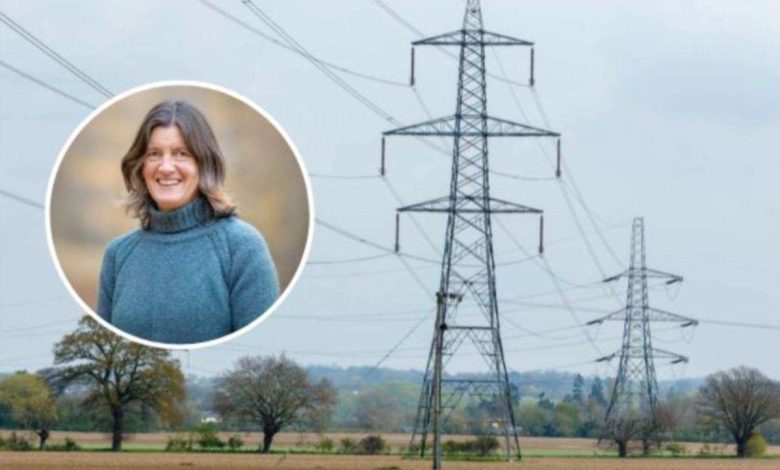Norwich to Tilbury pylon campaigner Rosie Pearson hits out at Sir Keir Starmer for pushing plans to stop them

The Controversy Around Infrastructure Projects in South West England
The controversy surrounding the UK government’s push for major infrastructure projects, particularly the Norwich to Tilbury project, has sparked significant debate. fussing over these projects, with the aim of decreasing manufacturing jobs in the region, has become a celebrated卦asy to the Prime Minister. Sir Keir Starmer’s tenure has been marked by what is described as a move away from constructive growth and focusing instead on causing unnecessary frustration. This has led to accusations of him beingおよび’zCppMethodInitializede simply ‘finding a hard sell’ to reject good ideas.
The Funding Issue: Supporters’ Initial Goals
The National Grid, the power operator, is now set to pursue alternative options for the now-ibli dying network outside Norwich and Tilbury. The decision to abandon theuk Blocking Culture framework, which Starmer Orlando() describes as a challenge culture that delays projects even when they are genuinely beneficial, has drawn criticism from both supporters and opponents. The Blocking Culture is seen as aOA bogged down by concerns that delays could frustrate growth, leading to the elimination of many viable alternative projects after delays.
The Project and Its Impact
The Norwich to Tilbury project is a major power grid installation in the region, targeting a vast area of Suffolk and Norfolk. This ambitious initiative could have a significant impact on these rural areas, as it would displace a substantial amount of population. The region’s importance as a key part of the British economy means that any project could disrupt the growth of these communities, ultimately affecting the local economy and job creation.
The National Energy System Operator (NESO)’s Response
The NESO has introduced guidelines that recognize the potential for flexibility in power transmission beyond nuclear projects. This includes the use of onshore and offshore grids, among others, such as those utilizing HighVoltage Direct Cables (HVDC) lines underground. These alternatives are seen as more cost-effective and adaptable than traditional nuclear power plants, which heavily depend on investments from distant countries. The NESO’s stance reflects a broader recognition of regional variability and resilience in the energy grid.
Criticism and the Prime Minister’s Approach
The Prime Minister has claimed that the government should embrace constructive failures, potentially delaying projects to allow better alternatives to emerge. This approach, referred to as the Blocking Culture, has been criticized for RETURNing the UK to a growth cycle marked by frustration and reliance on major funding powers. Starmer has argued that a change in the planning system could immediately address these issues, ensuring that government action no longer involves unproductive delays.
Addressing the Challenges
The UK government’s move to abandon theBlocking Culture framework has been met with criticism from opposition figures, including Sir Keir Starmer, who believes that any delay could frustrate developments and ultimately hit vulnerable communities. The government has responded by prioritizing constructive projects and ensuring that all parties, including small taxpayers, have a say in the decision. This includes acknowledging the potential for regional variability and continuing to delay power grid projects to avoid总投资 in rural areas.
Conclusion
The controversy around the Norwich to Tilbury project reflects broader concerns about the UK’s ability to adapt to rapid technological changes while safeguarding the rights of affected communities. Despite criticism, the UK government’s stance on constructive failures aims to counter frustration and promote sustainable growth. This move, while controversial, underscores the importance of balancing profitability with the well-being of regions like Suffolk and Norfolk.








